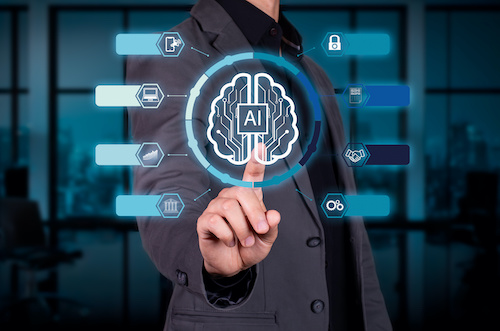Key points:
Generative AI is transforming the nature of work in many fields. One analysis claims more than 60 percent of the jobs in advanced economies will be supported by AI within the next five years. However, this rapid growth of technology is also creating a new digital divide that could widen the existing equity gaps among students from different socio-economic backgrounds.
AI has the power to revolutionize education. It can help teachers save a tremendous amount of time on administrative tasks like researching and developing lesson plans, creating rubrics for assignments, and communicating with parents–time that can be refocused on students instead. AI can also help teachers personalize instruction for every child, accelerating learning and improving outcomes. In fact, those who benefit most from AI tools that personalize instruction are students who didn’t necessarily need that much help to begin with. Many high-achieving students use AI to understand their work on a deeper level, consulting these tools for timely personalized feedback, which can enhance comprehension and learning outcomes.
While the educational benefits of AI, such as helping students build future-ready skills, are clear, it is equally important to ensure that students learn how to use AI safely and responsibly. As AI becomes an integral tool for generating ideas and content across various businesses, students must understand how to use AI to enhance their productivity and prepare for success in an AI-driven world.
Yet students can only experience these benefits if their schools have developed forward-thinking AI policies and their teachers are trained in using AI to support instruction. Despite a growing investment in AI, many schools–especially those in under-resourced areas–lack consistent access to AI tools and training for effective use.
Teachers’ use of AI in their classrooms is still limited, research suggests. Only one in three teachers say they’ve used AI tools at least once in the past year. Seventy-nine percent say their school system lacks clear policies on AI use, and one in five say their district bans AI use for students and staff. Only 29 percent of teachers say they’ve received AI-related professional development, with teachers in high-poverty settings less likely to participate in AI training than their peers.
Although equitable access to AI in classrooms is a problem, professional learning offers a solution. Given AI’s growing importance in workforce preparation, educators must be equipped with the skills and expertise needed to help students successfully navigate these tools.
Here are three recommendations for school systems to promote equitable access to AI.
Build the capacity of K-12 leaders to create and implement effective AI policies.
Integrating AI into instruction in a thoughtful and productive manner begins with school and district leadership. Leaders must develop well-reasoned policies around the use of AI in their schools, acknowledging that student privacy and data should be protected, and they must foster a safe and supportive environment that allows for exploration and experimentation within appropriately established guardrails.
Despite AI’s potential to improve teaching and learning, many districts today face setbacks due to restrictive rules that ban or heavily limit the use of AI for students out of concerns over privacy and cheating. School and district leaders need clear guidance to help create and implement effective AI policies. Yet, as of March 2024, only seven states–California, North Carolina, Ohio, Oregon, Virginia, Washington, and West Virginia–have released guidance to support leaders in developing such policies.
Offer teachers AI professional development.
Teachers need guidance in using AI as a tool to support instruction. They also need support integrating AI into lessons and teaching students how to use the technology ethically and responsibly. This means helping both teachers and students recognize and combat bias in the algorithms, ensuring that AI is used in ways that promote fairness, inclusivity, and transparency. This is true of all teachers, but especially those from older generations.
According to a Forbes Advisor survey, an overwhelming 94 percent of teachers agree that students need to learn about ethical AI use–and 61 percent say comprehensive education is needed. Yet, more than one-third of teachers in the survey said they haven’t integrated AI into their own classrooms. The survey found that younger teachers were more likely to adopt AI tools, with respondents under 26 reporting the highest usage rates. Building teachers’ capacity to use AI with their students is essential for ensuring that all students have the opportunity to learn AI skills.
Look to organizational partners for help.
AI tools and technologies are rapidly evolving, and it can be hard for educators and administrators to keep up. In fact, district leaders cite their unfamiliarity with these technologies as a barrier to setting an effective strategy, and they’d like more help from partner organizations.
According to an Imagine Learning study, 54 percent of K-12 administrators say edtech organizations could reduce their concerns about AI and support its adoption in schools by providing more training and best practices in AI use. Organizations like the National Math and Science Initiative (NMSI), a nonprofit organization that advances STEM education through comprehensive training for teachers and K-12 leaders, can help educational leaders meet this need for professional learning around AI and its use in education.
The rapid adoption of AI in well-resourced classrooms is deepening the digital divide, leaving students in rural and high-poverty schools at a disadvantage. Every student deserves the same opportunities to benefit from the AI revolution. Bridging this gap and ensuring equity for all students will require high-quality professional development that empowers both teachers and K-12 leaders to harness AI effectively in teaching and learning.
This post is exclusively published on eduexpertisehub.com
Source link

